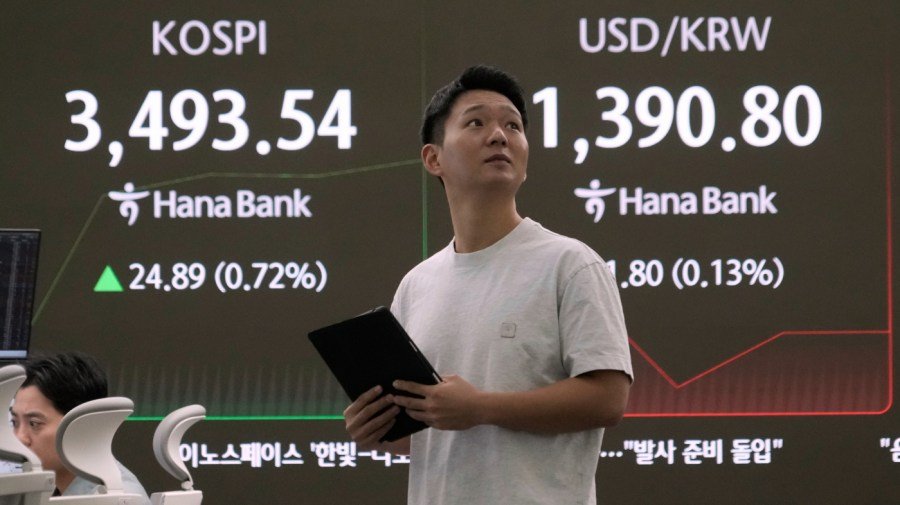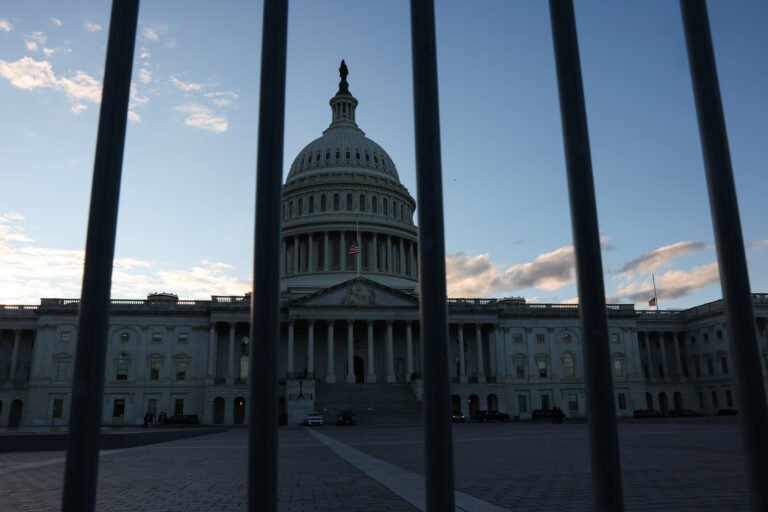
Following President Trump’s April 2 “Liberation Day” speech, stories proliferated that foreign investors were losing their appetite for dollar-denominated assets as U.S. stocks, bonds and the dollar all sold off. Some observers wondered if the U.S. was in danger of losing its status as a safe haven as a result of the widespread duties it imposed on trading partners.
The fears have lessened since then, as the U.S. stock market has gone on to set record highs and U.S. Treasurys have rallied.
The catalysts for the turnaround were President Trump’s decision to delay the implementation of reciprocal tariffs by 90 days (until July 9) and the truce the U.S. reached with China in May to reduce tariffs from unprecedented levels.
The fate of the dollar, however, is still in question. It depreciated by about 10 percent on a trade-weighted basis in the first half of this year, and many currency forecasters anticipate it will weaken further as the Federal Reserve eases monetary policy.
One reason is that lower U.S. interest rates lessen the attractiveness of U.S. bonds for foreign investors. Another reason is they also reduce the costs of hedging dollars by reducing interest-rate differentials between the U.S. and foreign countries.
The impact that currency hedging by foreigners is having on the dollar is highlighted by two recent reports.
A study by the Bank for International Settlements concludes that the dollar’s slide in April and May was mainly the result of non-U.S. investors increasing their currency hedging activity to mitigate losses. They did so by retaining their holdings of U.S. assets while also selling their dollar exposure in the forward foreign exchange market.
Meanwhile, a Deutsche Bank report found that beginning around mid-year, flows into dollar-hedged exchange-traded funds that buy U.S. assets have outpaced those into unhedged funds for the first time this decade.
Deutsche Bank estimates that about 80 percent of the approximate $7 trillion of funds that have flowed into foreign-domiciled U.S. equity exchange traded funds over the past three months have been on a currency-hedged basis. This figure is up from about 20 percent at the start of the year.
Viewed from a longer-term perspective, foreign investors are more oriented to buy U.S. equities today than in the past, and they are also more prone to hedge their currency exposure than before.
During the 1980s, for example, foreign investors, especially those in Japan, predominantly held U.S. bonds to earn higher income than they could in their home markets. While they would hedge the currency exposure on bonds during periods of dollar weakness, they typically purchased U.S. equities on an unhedged basis.
Since the 2008 financial crisis, however, foreign holdings of U.S. stocks have increased more than five-fold to nearly $17 trillion as of mid-2024, whereas holdings of long-term bonds have doubled to $12.7 trillion.
Much of the appeal of U.S. equities to foreign investors over this period stems from the dominance of U.S. multinationals, especially in technology. The tech sector accounts for about one third of the S&P 500 index versus 9 percent of the weight in the MSCI EAFE Index.
In the past few years, foreign investors have mainly been attracted by the dominant role U.S. multinationals have played in the realm of artificial intelligence. This has enabled U.S. stocks to far outpace international stocks since the start of this decade.
Why, then, are foreign investors concerned about the dollar? The principal reason is they view it as vulnerable, because the dollar is relatively high in comparison to where it traded over the past two decades.
Furthermore, interest rate differentials favoring the dollar are likely to narrow as the Fed lowers interest rates. In that event, the weakening of the dollar would be benign if lower U.S. interest rates are accompanied by falling long-term bond yields and higher stock prices.
However, there is a risk that the dollar’s depreciation could trigger a loss of investor confidence at some point, in which stocks and bonds sell off; this occurred on “liberation day.”
The main factor preventing a full-blown crisis was Trump’s decision to put Treasury Secretary Scott Bessent in charge of trade negotiations, as it helped calm investors’ concerns that U.S. actions could spawn a global trade war.
In comparison, one factor that could cause a loss of investor confidence now is the pressure the Trump administration is putting on the Federal Reserve to lower interest rates when inflation is nearly a full percentage point above its 2 percent target.
Thus far, investors have adopted a wait and see attitude about whether the Fed’s independence is at risk. However, if the Fed capitulated to political pressure as it did in the early 1970s, it could spawn a steeper decline in the dollar that would spill over to financial markets.
Nicholas Sargen, Ph.D., is an economic consultant for Fort Washington Investment Advisors and is affiliated with the University of Virginia’s Darden School of Business. He has authored three books including “Investing in the Trump Era: How Economic Policies Impact Financial Markets.”


